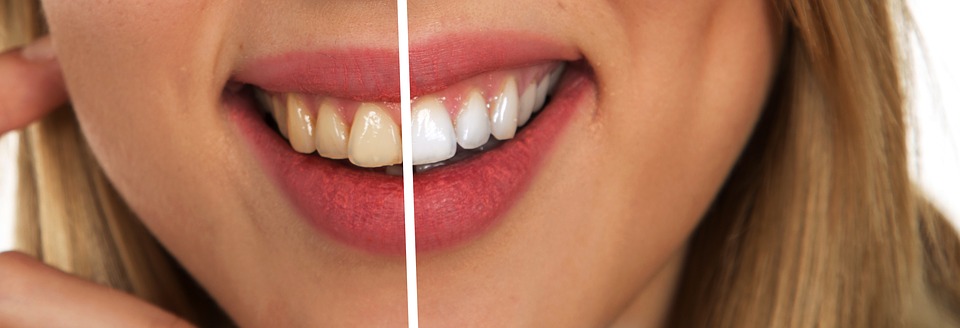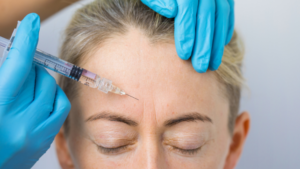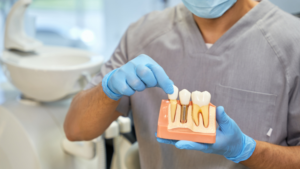With so many tooth whitening options available to you, it can be a nightmare knowing how to best improve your smile. Worse still, misinformation and the wrong options could see you spend good money for little results, or even damage your teeth and gums. With this in mind, we answer all the important questions and outline the tooth whitening facts.
This includes which tooth whitening treatments are the most effective, how to whiten your teeth safely, and how to keep whitened teeth looking beautiful.
How do I whiten my teeth effectively?
When it comes to whitening your teeth, you have three general options.
These are: over the counter whitening products, tooth whitening administered by unlicensed practitioners and professionally administered tooth whitening.
Even within these three general options there are a multitude of products to choose from.
Let’s run through them now:
Over the Counter Tooth Whitening Products

These are tooth whitening products that you can buy legally and easily over the counter at most pharmacists and supermarkets.
Health and beauty stores may sell them, as well as some dentists.
You buy the products, and then apply them yourself as per the product’s instructions
The most common products of this type include toothpastes that “effectively whiten teeth” and tooth whitening strips—sticky pieces of plastic that you keep on your teeth for certain periods of time.
The ingredients in over the counter tooth whitening products tend to change quickly, with new active ingredients being lauded as “the industry secret to whiter teeth”.
Activated charcoal is the current “active ingredient” to have this sensationalist treatment, with a huge amount of over the counter whitening products currently containing this ingredient.
These products are often marketed on television, magazines and the internet as producing dramatic results.
However, there is little clinical evidence suggesting that any of these over the counter products can actually have lasting whitening effects on your teeth.
Charcoal toothpastes have not been shown to remove tooth staining any more than regular toothpastes, despite being far more expensive.
The only “active ingredients” that actually have been clinically proven to whiten teeth are illegal to sell over the counter.
Therefore, it is highly unlikely that the whitening products you buy at your local pharmacy are going to actually improve your smile.
Despite this, over the counter tooth whitening products are extremely popular, with thousands of people swearing by it.
Surely this cannot be the case if the products don’t actually work?
Well there are actually several reasons why over the counter tooth whitening may have an enduring popularity even though they do little to whiten teeth.
These are:
1) They are relatively inexpensive
Professionally administered tooth whitening often costs several hundred pounds or more.
Over the counter tooth whitening products usually sell for under £20.
If you spend several hundred pounds on a product that does not work, you are likely to complain, to leave bad reviews and even report the person who sold you the product.
If you spent £5 on a product, would you do the same?
Probably not.
Therefore cheap over the counter products can get away with being ineffective.
2) They are marketed aggressively
Over the counter tooth whitening products are marketed through showing its purported effects on others. This convinces people that the products should work, and if they do not work then the problem is with you, not the product.
If people start using a product believing that it will work, then they are more likely to exaggerate (or fabricate) its effects even to themselves.
This is because they do not want to believe that they are somehow inferior to the person in the advert, or that they have been fooled by false advertising.
Rather, they would believe that their teeth are getting whiter too.
3) Your teeth get temporarily whiter when they dehydrate.
This mainly applies to why many people swear by over the counter tooth whitening strips.
When you apply these tooth whitening strips you usually have to keep your mouth open for a certain period of time.
When you do this, your teeth dehydrate. This naturally, but temporarily, whitens them.
People then remove the strips and find for the next few hours their teeth are slightly whiter.
The strips have worked, right?
Wrong, the whiteness is due to dehydration and will disappear after a couple of hours.
In short, over the counter tooth whitening products are harmless, as well as relatively inexpensive.
That being said, there is little evidence to suggest any of them can actually whiten your teeth at all.
Despite this, their popularity endures, and they may be worth trying if you do not want to pay for tooth whitening.
We would, however suggest, that a trip to the hygienist is a better cost-effective way of whitening your teeth.
Tooth whitening administered by an unlicensed professional

Increasingly beauty salons, pop-up kiosks in shopping malls, and some pharmacists have been offering tooth whitening services.
Please avoid these at all costs.
They will likely be inexpensive compared to tooth whitening performed by a dentist, but by using them you put yourself at risk of damaging your teeth permanently.
Only licensed dentists are legally allowed to administer this type of tooth whitening treatment.
If your practitioner is not a dentist, they are doing tooth whitening illegally, and the products they are using are likely to be unregulated.
You are therefore taking a huge gamble by purchasing tooth whitening from these types of suppliers.
Professionally administered tooth whitening performed by a dentist
The only definite way to effectively whiten your teeth is to have tooth whitening administered by a dentist.
Only dentists are allowed to sell products that contain ingredients which have been proven to whiten your teeth.
These ingredients are carbamide peroxide and hydrogen peroxide.
They work by changing the colour of surface level and deep stains in enamel, making them whiter.
These products can be used in different ways to suit how much time and money you are willing to spend on whitening your teeth.
These different tooth whitening methods include:
1) Custom made tooth-whitening trays

These are plastic moulds for your teeth that you fill with a tooth whitening gel containing hydrogen peroxide or carbamide peroxide.
You then wear these gel filled trays over your teeth for a set period of time, usually 3-10 hours.
As a general rule, the longer you wear the trays, the whiter your teeth become.
The trays are custom made by a dentist to fit perfectly over your teeth. This means that every corner and edge of your teeth gets whitened, and deeper stains can have better contact with the whitening gel.
Treatments involve wearing the trays and gel a number of times over a period of weeks or month.
It is usually the most expensive tooth whitening treatment option.
2) Generic tooth whitening trays
This is very similar to the custom made trays but the trays are not specially fitted to cover your teeth perfectly.
Therefore the results may not be as dramatic as with the first option.
That being said this is often a slightly cheaper option, and can still be very effective.
3) Laser tooth-whitening performed by a dentist

In this treatment, a dentist applies slightly stronger tooth whitening gels to your teeth, and speeds up the activation of the product by applying strong UV light to it with a laser.
This treatment usually lasts an hour, and its effects are seen immediately.
The effects are not very long lasting however.
Please note that the effectiveness of this treatment can also be exaggerated by the “dehydration effect”. It is probably therefore better to measure its effectiveness a few hours after you have the treatment done.
Most dentists will sell the laser tooth whitening in conjunction with tooth whitening trays.
Is tooth whitening dangerous for your teeth?
Having your teeth whitened with unregulated products, or by “practitioners” have not been trained properly can be incredibly dangerous.
There have been reports of excruciating pain and permanent damage to teeth following poorly administered tooth whitening.
In cases where teeth have been damaged by tooth whitening, it is usually either due to tooth enamel being worn away by strong acids, or gums being burnt by such chemicals being clumsily applied.
Damaged tooth enamel is the leading cause of sensitive teeth, and can also make your teeth more susceptible to chips, cracks and cavities.
Best avoided right?
That being said, legally approved tooth whitening products, applied by a trained professional is not dangerous for your teeth.
You should still refrain from using such products more often than 3-4 a week, so as to prevent gradual enamel erosion.
To ensure that tooth whitening is safe for your teeth, you need to check three things:
1) That the products you are using are not overly acidic
Tooth whitening works by bleaching your teeth with one of two ingredients: carbamide peroxide or hydrogen peroxide.
These substances are slightly different, but ultimately work in the same way.
These substances are acidic. Therefore too high a concentration of these ingredients in your tooth whitening gel can damage your tooth enamel, or any other tissue that it comes into contact with.
If properly applied by a dentist with special training, the absolute maximum safe concentration of carbamide peroxide to use on teeth is 22%.
Considering that the relative strengths of carbamide peroxide to hydrogen peroxide is 1:3, this would make the maximum strength of hydrogen peroxide that is safe to use 6%.
We recommend that you whiten your teeth with 10% carbamide peroxide, or 3.6% hydrogen peroxide. It is gentler on your teeth to use slightly less strong tooth whitening, but with more applications to achieve the same level of whiteness as you would do when using stronger whitening gels.
If any tooth whitening products claim that they use an “active ingredient” that is not carbamide peroxide or hydrogen peroxide please avoid using them.
You will either waste your money or damage your teeth.
2) That your tooth whitening treatment is administered by a dentist

Tooth whitening should always be sold under the supervision of a dentist.
It is illegal for a non-dentist to sell tooth-whitening products that contain over 0.1% hydrogen peroxide.
This includes dental hygienists, dental nurses, and dental therapists, unless they have special qualifications and training.
This means that if you buy tooth whitening from anyone other than a dental professional, you are either wasting your money on a product with little to no clinical evidence of effectiveness, or you are putting the health of your teeth into the hands of an illegal vendor.
Risking your health or your money is not worth it.
Even if a layperson is using the correct tooth whitening gels, it is still necessary that your teeth be professionally examined before any tooth whitening is administered.
If you have enamel damage, or cracks or cavities in your teeth, than even the use of relatively weak tooth whitening trays can be potentially damaging.
Only a dentist can assess your teeth for this type of damage potential from tooth whitening.
3) Your teeth should be monitored during and after tooth whitening
Tooth whitening should always be done in several treatments.
This ensures that its effects last a long time.
While you are having your tooth whitening (which can last from several weeks to several months) you should have a dentist monitor the progress of your treatment.
Such monitoring can both ensure that your treatment ends when you reach your desired shade of whiteness, and that no damage to your teeth occurs.
If you ensure that your tooth whitening is administered by a dental professional using the correct products, and is monitored regularly throughout, then the chances of causing damage to your teeth and gums are next to zero.
Is tooth whitening painful?
Since tooth whitening involved the application of acidic solutions to your bodily tissues, one might expect that it is painful.
Indeed, the misapplication of tooth whitening can cause painful damage to your teeth and gums.
However properly applied tooth whitening, under the supervision of a dentist should not hurt.
If you do feel pain or sensitivity following tooth whitening, please contact your dentist immediately.
This should not happen, but if it does your dentist needs to be held accountable, and should be able to rectify the situation.
How much should tooth whitening cost?
Tooth whitening products can be sold in the UK at anything from £10 to £1000.
It is important to bear in mind that, like most things in life, you get what you pay for with tooth whitening
You are unlikely to find any products which have actually been clinically proven to whiten your teeth for less than one hundred pounds.
Given their manufacturing cost, a dental practice will make a healthy profit selling a course of tooth whitening treatment for between £150-600.
Anything higher than £600 would be considered expensive for tooth whitening—after all, someone has to pay those Harley Street rents.
However having your tooth whitening managed by a dentist you trust may be worth paying extra for.
Will tooth whitening work on all kinds of stains?
Broadly speaking there are three kinds of stains that occur to your teeth.
These are: age related staining, intrinsic staining and extrinsic staining.
Professionally administered tooth whitening trays are effective at removing all three kinds of stains but work particularly well intrinsic staining.
Here is a breakdown on the three types of staining:
1) Age related staining

As you get older your teeth become darker and more yellow.
This is due to the thinning of your enamel and the darkening of the dentin that sits inside your enamel.
Such staining happens to everyone, but the extent to which it happens has both a genetic component and is affected by your level of oral hygiene.
Tooth whitening can go some way to removing age related staining in that it can whiten the enamel that surrounds your darkened dentin.
However it will be very difficult to get your teeth to a colour to the shade that you had as a teenager.
This is because the tooth whitening cannot penetrate dentin, the darkening of which is one of the causes of age related staining.
2) Internal staining

Internal staining is the darkening of your tooth enamel.
It usually causes your teeth to go brown, grey or off white, as opposed to yellow.
The main causes of internal staining are trauma to the teeth (often referred to as a “dead tooth”) as well as gradual staining caused by tea, coffee, red wine and tobacco use over a very long time.
Tooth whitening is most effective at eliminating internal staining because it whitens your teeth’s enamel.
Therefore if your teeth have been discoloured due to trauma, or long-term exposure to tobacco or certain foods, tooth whitening could be the perfect solution for you.
3) Superficial staining

Superficial staining is staining to the surface of the teeth, usually by tartar or short term exposure to certain foods, drinks and tobacco.
Superficial staining can range from yellow to greyish-brown, depending on the cause of the stains.
Although tooth whitening can theoretically remove superficial staining, such staining can be more effectively removed through a session with the dental hygienist .
The reason why a hygiene appointment is more suitable for this type of staining is because superficial staining is usually symptomatic of a lack of dental hygiene, and the hygienist can rectify this at its root cause, rather than simply mask over it with bleach.
Additionally, a hygiene appointment is cheaper than teeth whitening, and will yield at least as good results in removing superficial staining.
How white can I make my teeth with teeth whitening?
Dentists usually measure the whiteness of teeth using a shade guide, pictured below.

If you use 92 Dental’s recommended custom made tooth whitening trays, your teeth will usually whiten your teeth from between 4-6 shades.
This means that even if your teeth are severely discoloured, they should look far whiter than average following properly administered tooth whitening treatment.
The effectiveness of tooth whitening is affected by a number of factors, including the type of tooth whitening method you use, how many treatments you have, how you administer the treatment, and how you look after your teeth after the treatment.
Therefore, if you go for cheaper options, such as laser activated tooth whitening, then you should expect less pronounced results.
It is definitely worth noting that extremely white “Hollywood smiles” are usually the result of veneers rather than tooth whitening.
Such a cosmetic treatment is vastly more expensive, and compromises the structure of your teeth.
How often can I whiten my teeth?
When you whiten your teeth you are usually given a set of between 10-20 trays that you wear over a period of weeks.
Each set of 10-20 trays is considered one treatment, and the trays can each be worn on consecutive days, or 2-3 days apart each.
That being said, you should not have a total tooth whitening treatment more than once a year if you are using tooth whitening gels with 10% or higher levels of carbon peroxide (3% or higher of hydrogen peroxide).
If you are using weaker tooth whitening products, then you can whiten your teeth no more than every 6 months.
Exceeding these may result in damaging your tooth enamel through acid erosion, leading to tooth sensitivity and increased risk of cavities, as well as long-term age related staining.
Can I whiten my teeth twice in a day?
It is safe for you to use tooth whitening trays four hours apart from each other.
This is enough time for your enamel to recover from any minimal wear that may have been caused by the whitening gel.
However, tooth whitening is more effective the longer you leave each tray in. We recommend that you leave them in for a minimum of 6 hours, ideally for 8-10 hours (overnight if you can).
Therefore, even though it is safe to use two or more sets of tooth whitening trays in a day, you will have best results if you use them one or two days apart.
Using the trays every two, or even every three days will not adversely effect the overall result of your tooth whitening as its effect is cumulative.
How long does it take to see the effects of tooth whitening?

If you use the trays every day, then you should see the effects faster than if you use them less regularly.
The effect varies from person to person, and older people with more deep-seated stains find that the desired effects of tooth whitening take longer to happen.
Regardless of age, so long as tooth whitening is properly applied by qualified dentists using licensed products, highly noticeable effects should be seen well within two to three weeks.
Your whiter teeth can remain that way for years so long as you look after them properly and try to address the route cause of discolouration.
How do I keep my teeth white after tooth whitening?
The effects of tooth whitening can be prolonged by good oral hygiene practices and making lifestyle adjustments that tackle the cause of your initial tooth discolouration.
Particularly beneficial to keeping your teeth white (both before and after tooth whitening treatments) is regular visits to the hygienist.
We recommend seeing the hygienist every three months if you really want to keep your smile looking as beautiful as possible.
Such regular visits to the hygienist also mitigates the need for future tooth whitening, which is a far more expensive than even two years worth of regular hygiene appointments.
The hygienist will therefore also save you money in the long run.
Can I whiten teeth with fillings, veneers and crowns or which have been implanted?
Carbamide peroxide and hydrogen peroxide only whiten stains in tooth enamel.
This means that if you whiten a tooth with a filling or a crown, then the filling or crown will not be whitened.
The rest of the tooth will still be whitened however.
Teeth which have veneers or which have been implanted will be unaffected by tooth whitening, as the majority of the tooth surface in these cases are not made out of tooth enamel.




